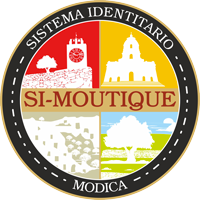Mùrika, Racconti di pietra
A room for museum. A widespread Museum
In Modica at “The Forefathers’Houses” the Museum “Murika, stories of stones” for the preservation of the ancient ethnographic living and for the recovery and the valorization of the identity of the places, is situated . The goal is to celebrate the rural communities of the County of Modica using as main theme the local stone and the achievements through it, walls, vaults, floors, artifacts, furnishings as well as the folklore, the fabrics, the furniture, the music.
In Modica, as a part of the Si-Moutique, one can find an eco-museum inclined to the conservation of ethnographic ancient living and the restoration and enhancement of the identiy of places.
In 1891 in Europe Skansen was inaugurated, based on an idea by by an Artur Hazeliu’ idea, on the Swedish island of Djurgarden, the first form of the reconstruction of popular settings for its architectural and cultural preservation. These structure with pedagogical-illustrative function are in Scandinavia and the Netherlands, and presently, in many places: from the Cretan Lychnostatis to the Zaanse Schans in Netherlands,from the PAV in Turin to the English Steam.
Skansen is till a successful model with a proposal that Si-Moutique want to make its own, reworking and promoting it through a cultural tourism receptive project. The aim is to celebrate the rural communities of the County of Modica using as a guideline the local stone and its achievement: walls, vaults, floors, artifacts, furnishings, folklore, textiles, furnitures, ancient music . A social duty of preservation and development of all the forms of popular culture.
The belief of the proponents is the integrity of historical buildings and the surrounding landscape, the existence of a minor historical heritage for preservation and enhancement, , having as its aim touristical promotion.
Our guidelines are the Conservation, restoration and enhancement of living environments and traditional works, useful to pass on the material culture; the reconstruction of the habits of the local population, the relationship with the surrounding environments, religious traditions, cultural and recreational activities, and the use of natural resources. These are our guidelines.
The ancient fortified house of the Consolo, now “The Forefathers’ Houses”, wants to be the exponent of the project because it preserves traces of past experiences , especially concerning the complete recovery of stone artefacts. The protection of the historic village and the surrounding landscape also depends from them of the elders who landed down their recipes of local products, artisans kills,tools for their jobs and home furnishings, and through the stories that are handed down from generation to generation.
And this new museum idea of Moutique also becomes open-airs because it includes the lush countryside of Modica with Don Nele’s house,a structure located among muri a secco, carob and hackberry trees, and the beautiful Hyblean coastline with Annamare’s house, between the old Ciarciolo, a village of Marina di Modica,andPisciotto with the old FornacePenna, the location of the television series”Commissario Montalbano”.
The eco-museum becomes a treasure capable of harboring and encapsulate the essence of a location, its spirit, inquiring about uses and costumes, poking around in the inheritance of the place, like old trunks stored in an attic. A community has lungs full of air that surrounds it, but also has in its veins the blood of its ancestors and of the heritage has been transmitted to its children and has the habits of its culture. An eco-museum is a box of wonders where cultural tourism,hospitality, food and wine area meeting point.
Is not it a sublimation of the ethnographic goals of the various DeBonstetten, Hazelius and romantic philanthropists ? We believe it, we tease the culture for it to be a success: a village revived by rooms, by an old way of living, could be a museum.
And the “guardians” of this museum will be all those who are going to visit it, to live it and to relish it, contributing to the compensation of a , tangible and intangible heritage, forgotten for ages


